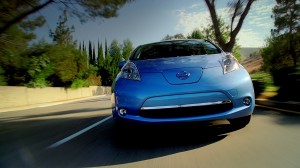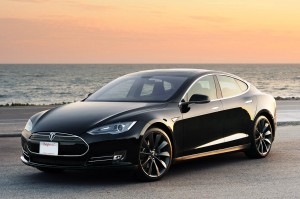Electric vehicles have had a down year, and many people blame low gas prices, per the Associated Press:
At their peak in 2013, with gas averaging $3.50 per gallon, Americans bought only 341,000 hybrids and electrics, about 2.2 percent of total U.S. car sales, according to Kelley Blue Book.
Companies spent millions developing the cars, taking losses to meet government fuel economy standards that gradually increase and require the new-car fleet to average 54.5 miles per gallon by 2025.
As gas prices fell below $2 per gallon, sales of hybrids and electrics dropped further. Last year, automakers had 16 hybrid and electric models on sale, but sales sank to just over 274,000.
But poor marketing is a big part of the story, too. Many automakers tried to sell the vehicles as an eco-friendly alternative or competitor to the popular hybrid vehicles like the Toyota Prius. That might explain why the Nissan LEAF is called a “leaf” and looks vaguely like a goofy Prius.
But in their haste to please the eco crowd, these automakers were overlooking one critical attribute of an electric vehicle: they are fun to drive.
Tesla realized this early on, and as a result have successfully positioned their vehicles not just as an eco-toy for the rich but as a new and exciting technology that drives better than clunky old gas cars. In fact, most Tesla buyers don’t actually care about the environment but instead are interested in access to new technology.
But now with gas prices so low, other automakers are coming around to marketing the performance aspect, from the same article:
At the New York International Auto Show on Wednesday, Hyundai and Toyota showed off new electric and hybrid vehicles, with presenters from both companies touting them as “fun to drive.” Hyundai unveiled battery, gas-electric hybrid and plug-in versions of a new car called the Ioniq, while Toyota showed the plug-in Prius Prime, which can go 22 miles on electricity before the gas-electric power system kicks in. The electric range is double the old version.
It’s better late than never. There’s a much bigger market of people who want a fun car to drive than people who care about climate change and Saudi Arabia. So this is a good and long overdue pivot.
But perhaps more importantly, Tesla’s Model III (to be unveiled this week) and the Chevy Bolt — both 200-mile range vehicles for under $40,000 — will herald the beginning of truly mass-market EVs that can appeal to a broader market segment.
It will take some time, but between better marketing and vehicles with improved range at a lower cost, the battery electric revolution in driving will be here to stay.
And no other single technology could be more welcome for combating climate change.
Leave a Reply
You must be logged in to post a comment.




